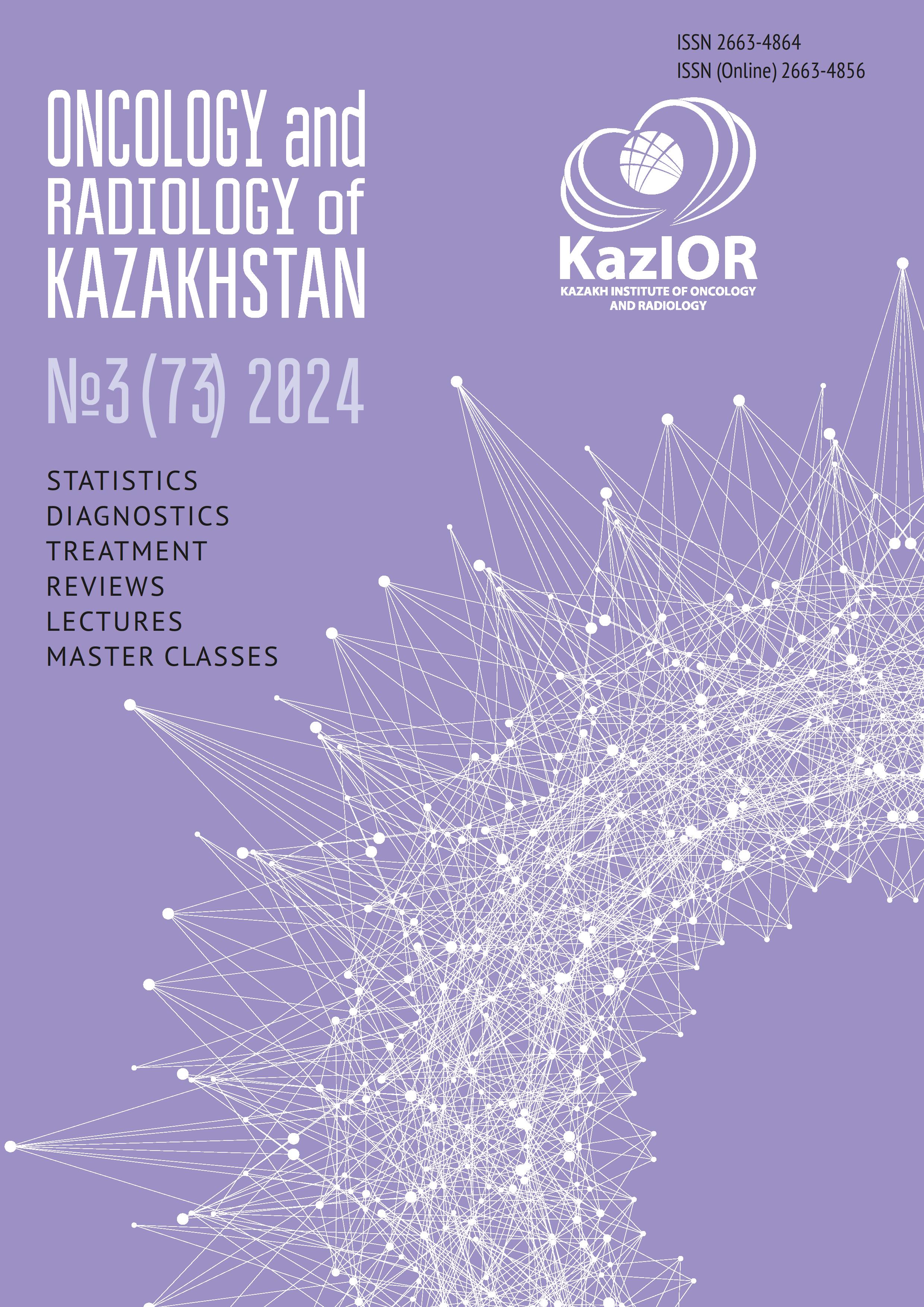SIMULTANEOUS SURGICAL OPERATIONS FOR HEART DISEASES AND MALIGNANT TUMORS, PERFORMED FOR THE FIRST TIME IN KAZAKHSTAN: A SERIES OF CASES
Keywords:
simultaneous operations, coronary artery bypass grafting, coronary artery disease, valvular heart disease, lung cancer, adenocarcinoma, renal cell carcinoma, pheochromocytomaAbstract
Relevance: For patients with heart disease and concomitant neoplasms, simultaneous surgery may be the method of choice. However, there are currently no standard clinical guidelines for this intervention.
The study aimed to describe a series of clinical cases of simultaneous surgical intervention in simultaneously existing cardiac pathologies and malignant neoplasms, evaluate the feasibility of such an intervention method, and discuss its advantages and disadvantages as a treatment method.
Methods: A retrospective analysis included 13 patients (8 men and 5 women, age range – 49-74 years) with combined cardiac pathology and malignant neoplasm in other organs. The most common heart diseases were coronary artery disease and valvular defects, and the most common heart surgery was coronary artery bypass grafting. The analysis included clinical cases of neoplasms in the organs of the abdominal cavity and the chest.
Results: The average duration of simultaneous surgery was 322±76 minutes (mean ± standard deviation, range from 220 to 470 minutes), and the average intraoperative blood loss was 342±242 ml (range from 100 to 1000 ml). The mortality rate in the hospital was 0%, the average stay in the intensive care unit was 2.4 days (range from 1 to 5 days), and in the specialized department – 11.6 days (range from 5 to 21 days), respectively. All patients were discharged in satisfactory condition and underwent conservative treatment without additional surgical interventions. During the follow-up period after discharge, four patients died within 5 years. The 1-year, 3-year, and 5-year survival rates were 92.3%, 76.9%, and 69.2%, respectively.
Conclusion: Simultaneous operations may be the method of choice for patients with heart pathology and concomitant malignant neoplasms of the abdominal cavity and the chest. Such concomitant pathologies can be effectively treated simultaneously. This is the first such study conducted in the Central Asian region, particularly Kazakhstan

